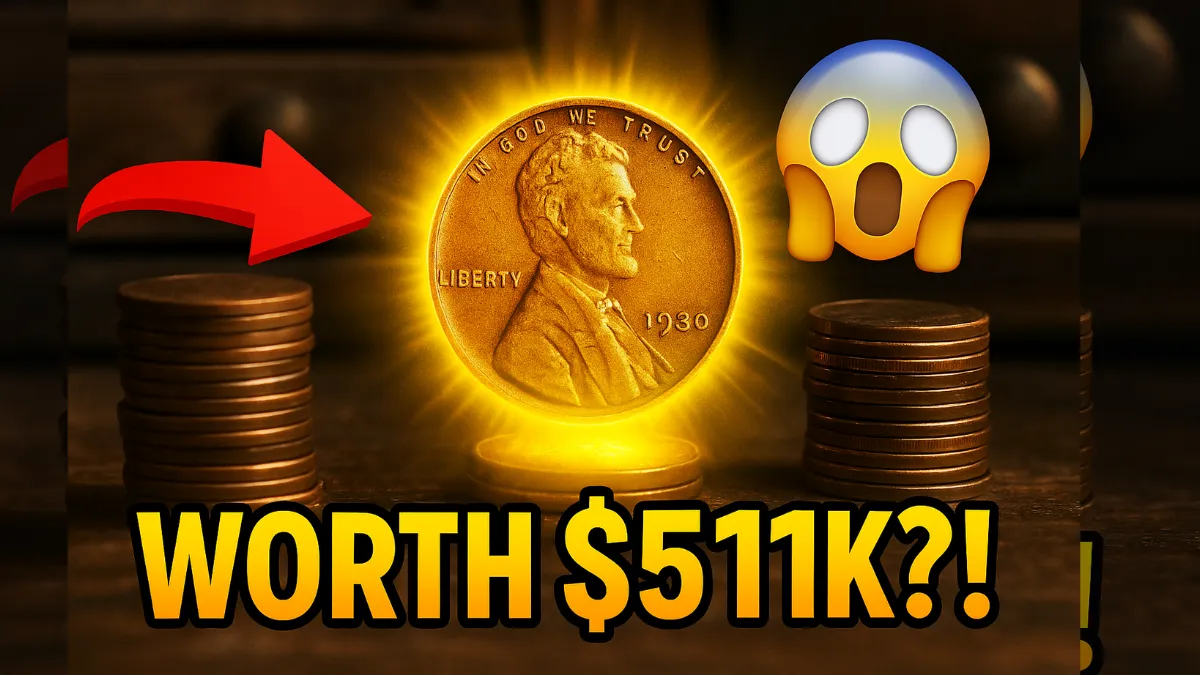Most people casually drop pennies into jars, leave them forgotten in pockets, or let them accumulate beneath car seats. Usually, pennies are viewed as the least valuable coins we carry. But imagine if one of those small coins could be worth hundreds of thousands of dollars.
It might sound unbelievable, but one unassuming coin—the Lincoln Wheat Penny—has shocked collectors with its incredible value. It could be hiding in your spare change, just waiting to be discovered. While most pennies are easily overlooked, this historic coin has become a highly prized gem in the world of numismatics, offering big rewards to lucky finders.
A Coin That Changed U.S. History
First released in 1909, the Lincoln Wheat Penny was introduced to honor the 100th birthday of President Abraham Lincoln. It was the first U.S. coin to depict a real individual, replacing the traditional use of symbolic figures such as Lady Liberty.
Designed by the skilled engraver Victor David Brenner, the front shows Lincoln’s profile, while the back displays two sheaves of wheat, which is how it earned its “Wheat Penny” nickname. Minted through 1958, the series contains some rare issues that have reached values of up to $510,000.
A Valuable Mistake from Wartime
Among the rarest Lincoln Wheat Pennies is the 1943 copper version. During World War II, copper was essential for military equipment, so the Mint used zinc-coated steel instead. But a few copper planchets from 1942 remained in the machines, creating accidental 1943 copper pennies.
Only a few of these coins are known to exist today, and their rarity has made them highly desirable. If you suspect you have one, try this trick: use a magnet. Steel pennies will stick, but copper won’t. If yours doesn’t cling, you could have a fortune in your hand.
Other Lincoln Pennies That Might Be Worth Big Bucks
Although the 1943 copper penny is the most famous, several other Lincoln Wheat Pennies are extremely valuable. The 1909-S VDB, for example, was made in San Francisco and shows the designer’s initials—only 484,000 were ever struck. The 1914-D from the Denver Mint is another elusive coin, rarely seen in circulation today.
A 1922 penny missing the “D” mint mark due to a die flaw is also a collector’s target. Lastly, the 1955 Double Die penny features doubled lettering that’s easy to spot and loved by collectors. Each of these coins represents a mix of rarity and history that boosts their value.
Spotting a Valuable Penny
To begin evaluating your Lincoln Wheat Penny, look at the date and search for a mint mark, which is located just beneath the year. You’ll see a letter like “D” for Denver, “S” for San Francisco, or no mark for Philadelphia. Some year and mint combinations are much harder to find, making them more valuable to collectors.
If you believe you’ve found a rare 1943 copper penny, don’t clean it—cleaning coins can reduce their market value. Always handle valuable coins by the edges and consider placing them in a protective holder to keep them safe and untarnished.
Consider sending potentially valuable finds to a reputable coin grading service. These services can confirm authenticity, assign a grade, and seal the coin for protection and long-term value.
If you believe your coin could be worth something significant, your next step should be verification. Professional coin grading services can assess the condition, confirm whether your coin is authentic, and assign it a grade that affects its value. Once graded, the coin is placed in a tamper-resistant case, ensuring its condition won’t degrade over time.
This process also makes it easier to sell the coin to serious collectors or through auctions. Don’t rely solely on online forums or photos—an expert’s confirmation is the key to unlocking your coin’s full potential.
The Thrill of the Hunt
One of the most exciting aspects of coin collecting is that rare finds can still appear in regular pocket change. You don’t need special equipment or years of experience to begin. Whether you’re searching through an old coin jar or getting change at the store, it’s possible to come across a valuable penny.
All it takes is attention to detail and a bit of luck. Each coin is a small historical artifact, and with enough patience, you might just uncover a rare gem. The thrill comes from the fact that treasure can hide in plain sight.
More Than Just Spare Change
The Lincoln Wheat Penny is a perfect example of how something small and overlooked can hold great significance and worth. With its rich backstory, unique artwork, and rare variations, it captures the imagination of collectors and historians alike.
Instead of dismissing pennies as worthless, take a second look—you might have a miniature masterpiece in your hand. These coins represent not only monetary value but also a tangible connection to America’s past. So next time you get change, remember: the most valuable coin in your pocket could be one you’ve always ignored.
FAQs
Q1: How do I know if my 1943 penny is made of copper or steel?
Test it with a magnet. Steel pennies will stick. If it doesn’t stick, you might have a rare copper penny.
Q2: What makes the 1909-S VDB penny so valuable to collectors?
It was the first year of the design, minted in low numbers in San Francisco and includes the designer’s initials “VDB” on the reverse.
Q3: Should I clean old pennies before showing them to a collector?
No. Cleaning coins can harm their surfaces and reduce their value. Always keep them in their original condition for evaluation.
Q4: Where do I find the mint mark on a Lincoln Wheat Penny?
Look just below the year on the front of the coin. It will show a small letter like D, S, or be blank for Philadelphia.
